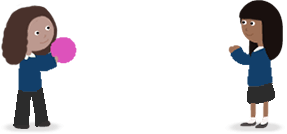No Nonsense Spelling

At Newbold and Tredington, we teach Phase 6 through a scheme called ‘No Nonsense Spellings’ and this scheme continued in Years 3-6. The focus of the programme is on the teaching of spelling, which embraces knowledge of spell- ing conventions – patterns and rules; but integral to the teaching is the opportunity to promote the learning of spellings, including statutory words, common exceptions and personal spellings.
Teaching sequence
The programme has been written broadly following a teaching sequence for spelling, whereby each new concept is taught, practised and then applied and assessed. Frequently there is also a ‘Revise’ session before the teaching session. A typical teaching sequence is as follows:
Revise
Activate prior knowledge Revisit previous linked learning
Teach
Introduce the new concept Explain Investigate
Model
Practise
Individual/group work Extend/explore the concept independently Investigate
Generalise
Apply/Assess
Assess through independent application Explain and demonstrate understanding
Within the lessons, the particular focus is identified, followed by suggested teaching strategies.
By integrating activities for handwriting, the benefit of making a spelling activity kinaesthetic is secured. The pupil acquires the physical memory of the spelling pattern as well as the visual. Integral to the process is the scope to encourage pupils to learn spellings.
Modelling: An activity is described, and it is anticipated that the action expected of pupils is modelled to them first.
Spelling partners: Pupils are asked to work in pairs, often to ‘test’ each other. They will be asked to work with their spelling partner from time to time.
Assessment
Pupils’ learning is assessed throughout the programme. The ‘Apply’ part of the sequence regularly includes assessment activities to identify if pupils have learnt the key concept taught. These activities include:
• Testing–by teacher and peers
• Dictation
• Explaining
• Independent application in writing
• Frequent learning and testing of statutory and personal words.
‘Have a go’ sheets are used to encourage the spelling of unknown words in writing.
Techniques to practise spellings:
Rather than a weekly test, children will be sent home with a list of words to learn over each half term which will be tested in the final week.




